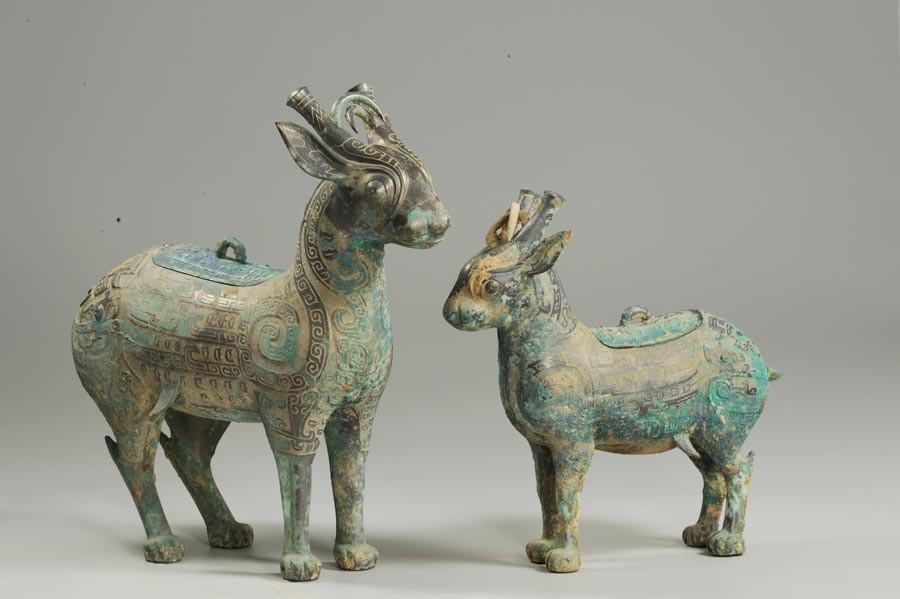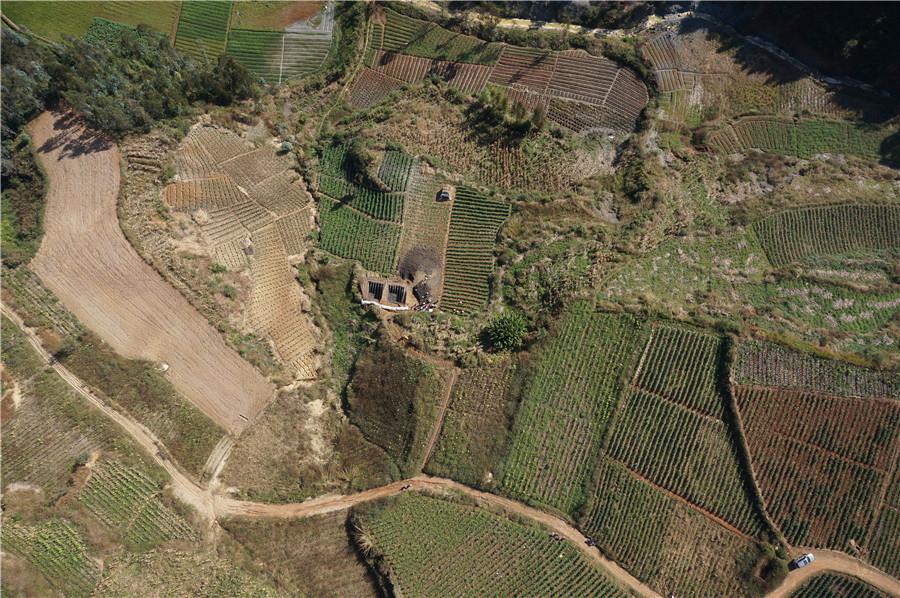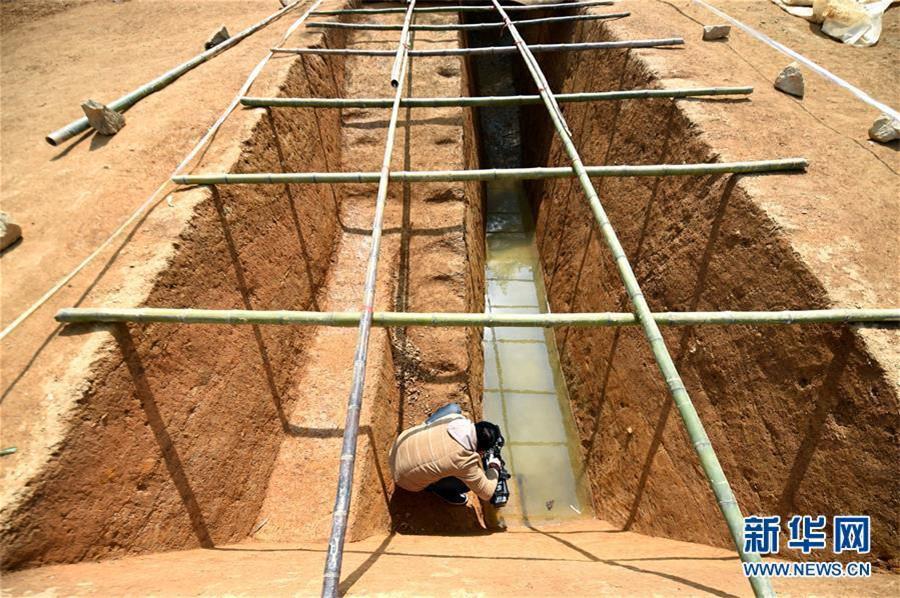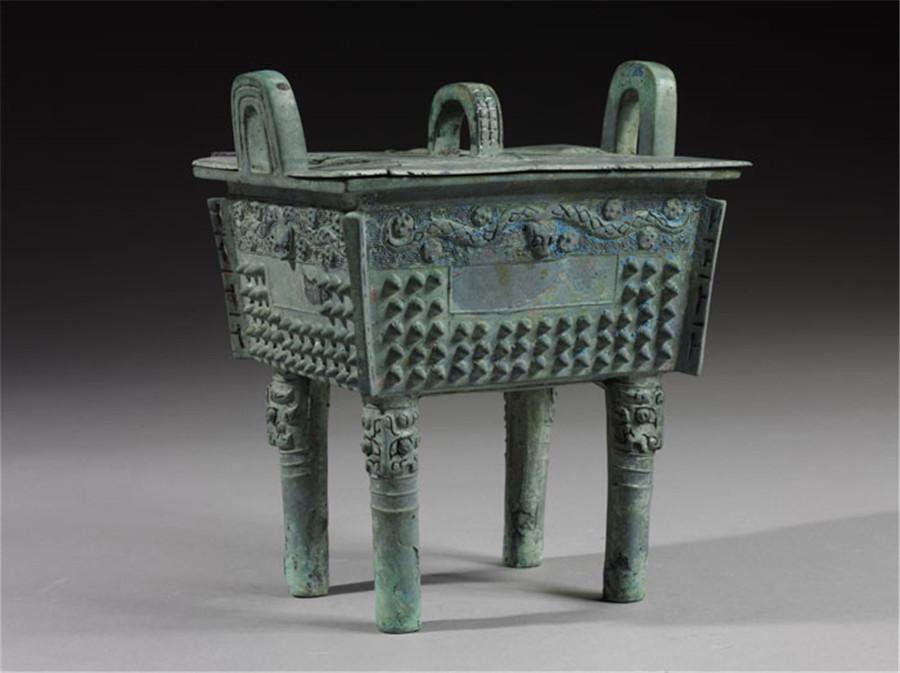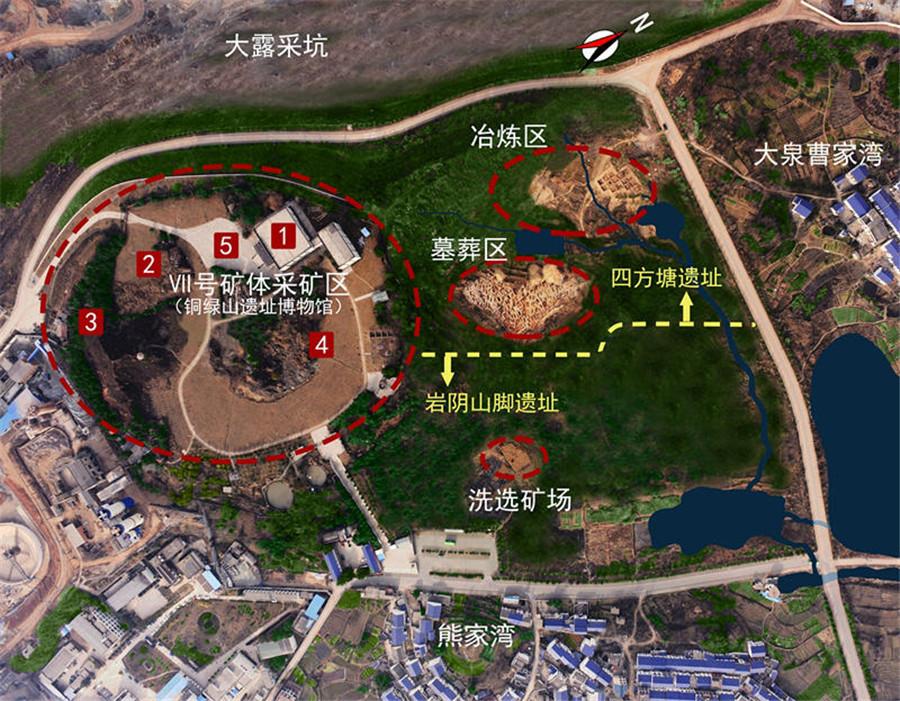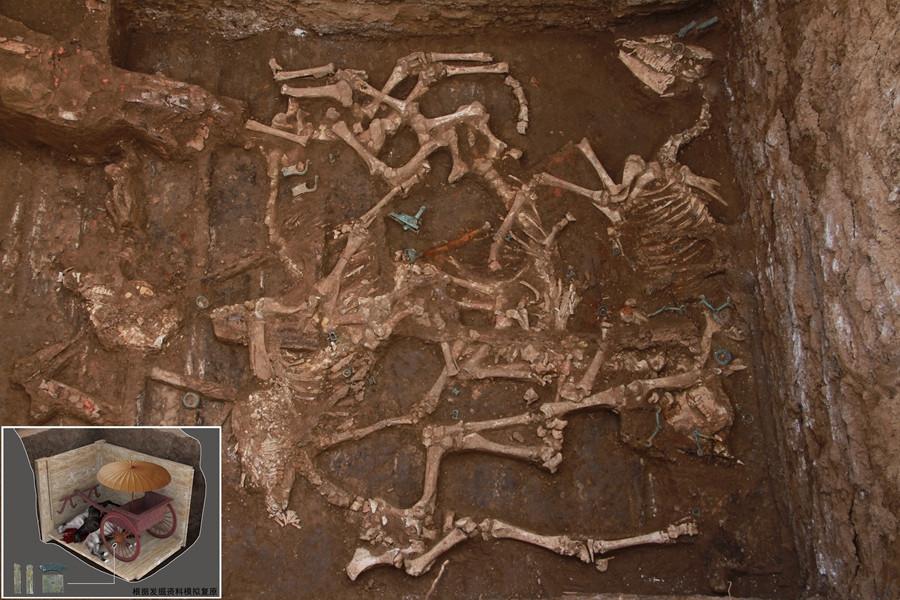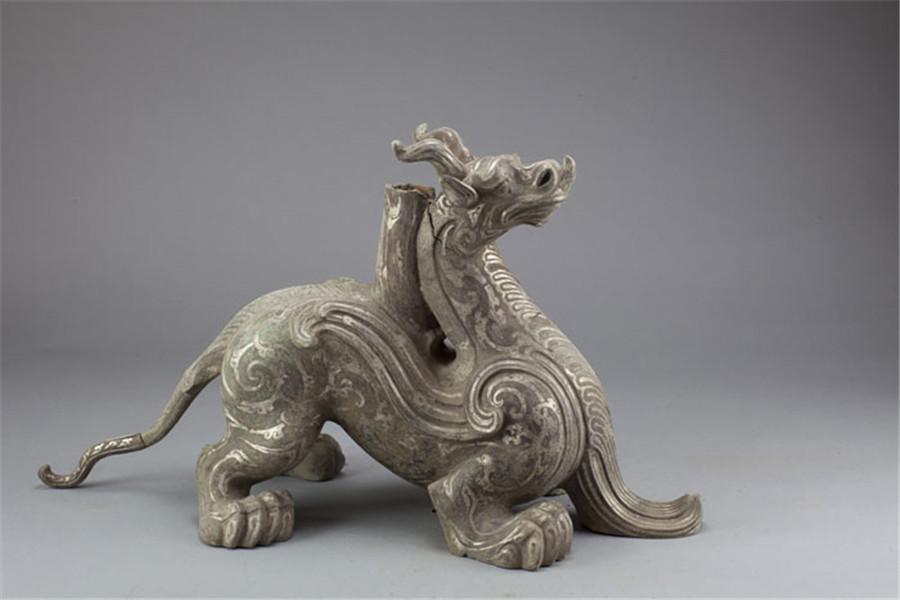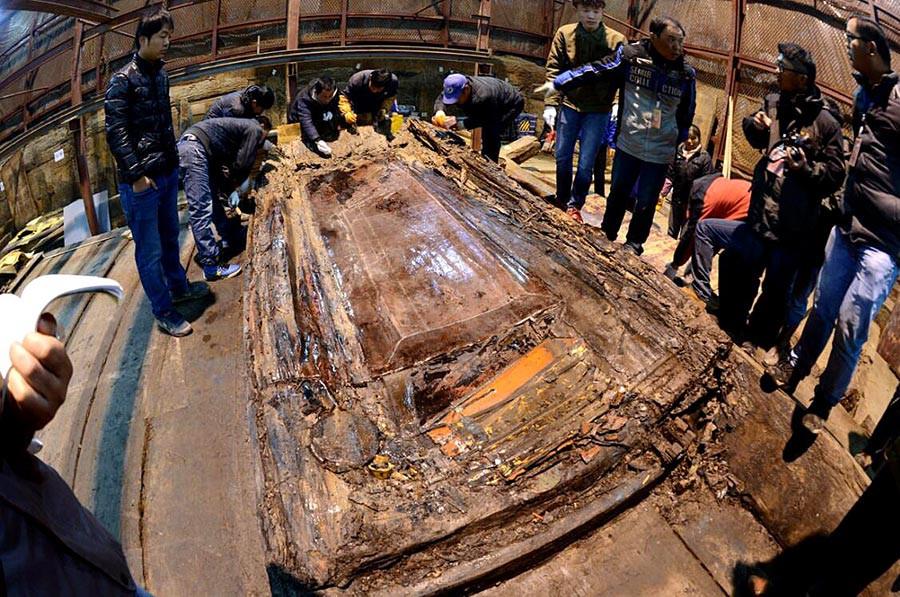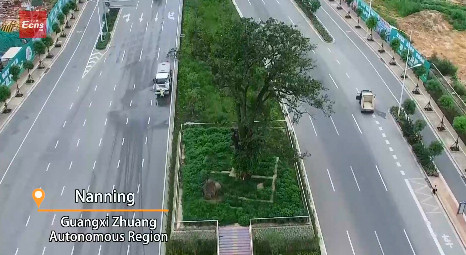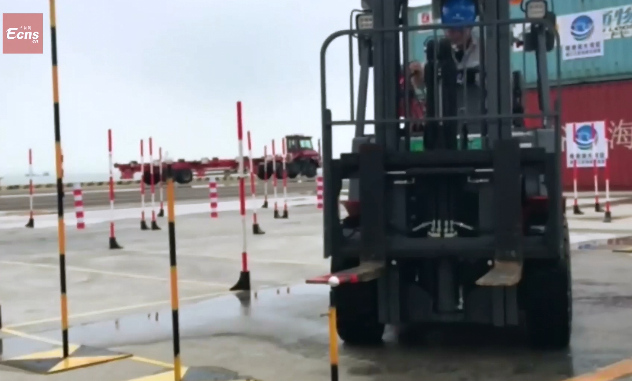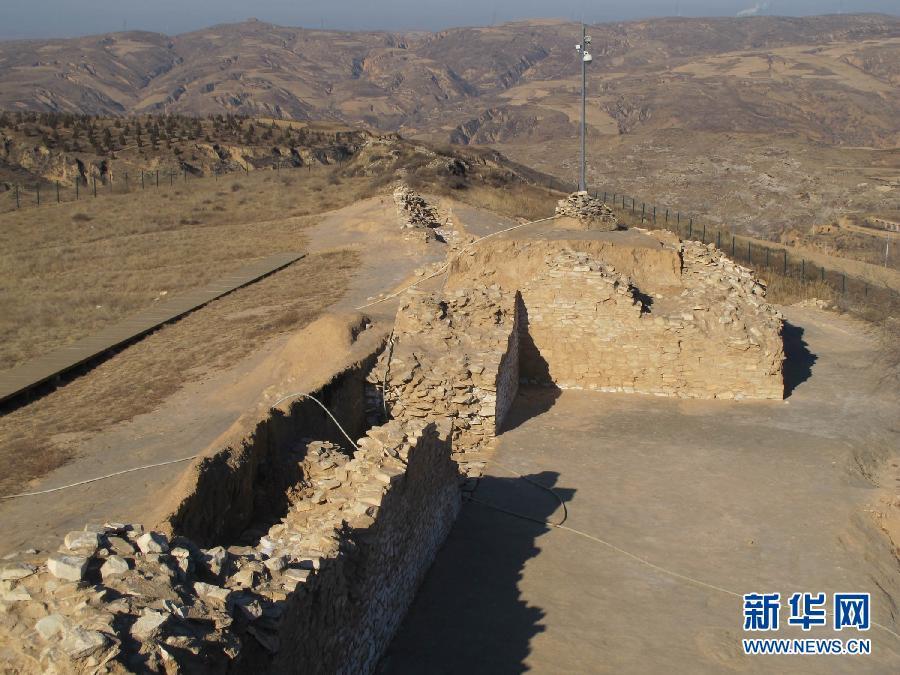
A section of ancient city wall is seen at the Shimao Ruins in Shenmu county, Shaanxi province. (File photo/Xinhua)
Shimao Ruins in Shenmu county, Shaanxi Province
Located in Shenmu County of Shaanxi province, the Shimao Ruins date from the late Longshan Period (about 2350 to 1950 BC) to the Xia Dynasty (c.21st century-16th century BC). The site was a huge stone city covering more than four square kilometers.
The Shimao Ruins consist of three parts, including an imperial town and inner and outer cities. The size of the ruins is much larger than similar ruins, such as the Liangzhu Ruins and Taosi Ruins. Many precious relics haven been unearthed, including a large number of carved jade and mural fragments.
The Neolithic Shimao Ruins are believed to be the biggest prehistoric city ruins found in China. The find has had a significant impact in changing historical studies about Chinese civilization.
Digging began in 2011, and archaeologists have made discoveries dating back over 4,000 years, redefining China's history of building city walls. Jade knives and other objects also have been unearthed.
About 70 to 80 skulls from young women have been found. It is believed they were killed and subsequently buried in a mass grave here.
The Shimao city ruins will go down in history as one of the definitive archaeological finds of the century thus far. Its significance cannot be underestimated, as it redefines previous studies on Chinese civilization.
Shimao Ruins in Shenmu county of Shaanxi province were listed among China's top 10 archaeological discoveries in 2012.






